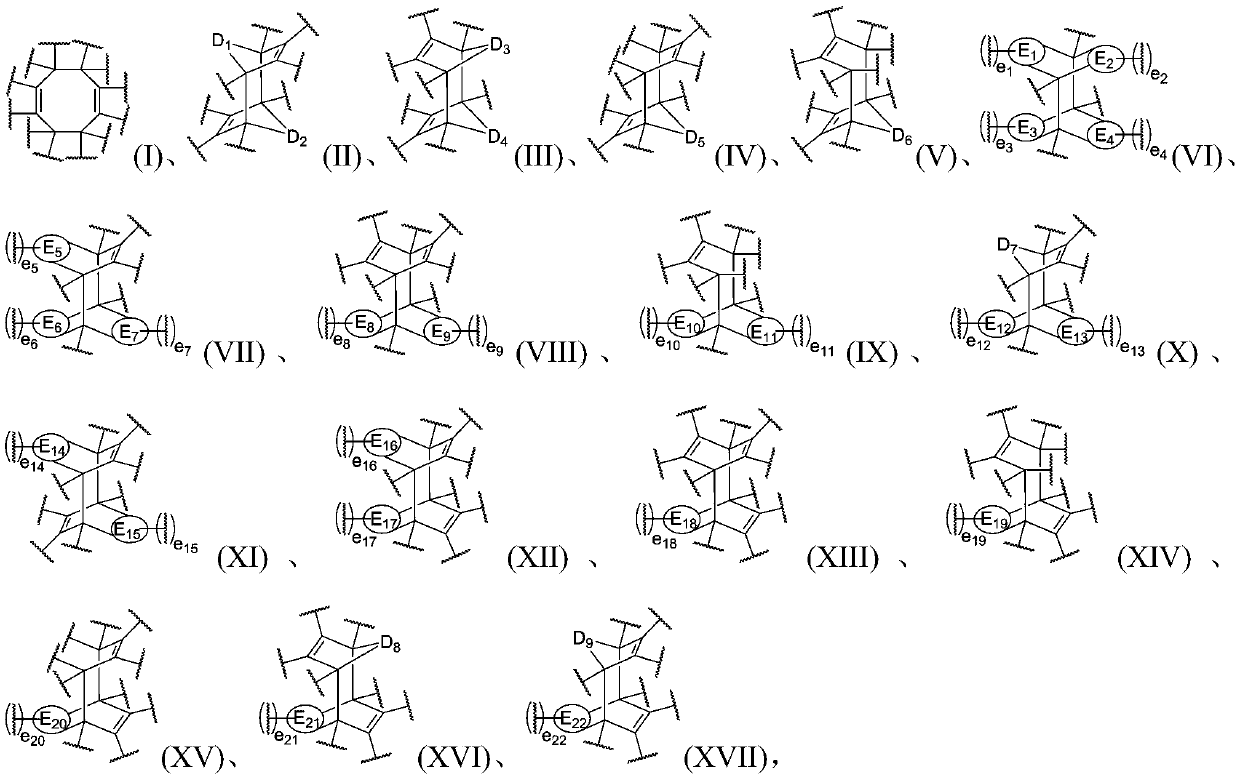Energy absorption method based on dynamic polymer
A polymer and dynamic technology, applied in the field of energy absorption, can solve the problems of easy failure of energy-absorbing materials and low energy-absorbing efficiency
- Summary
- Abstract
- Description
- Claims
- Application Information
AI Technical Summary
Problems solved by technology
Method used
Image
Examples
Embodiment approach
[0076] In the present invention, the dynamic polymer may have one, two or more than two glass transition temperatures, or may not have a glass transition temperature. Among them, in a preferred embodiment of the present invention, at least one of the glass transition temperatures of the dynamic polymer is higher than 100°C, more preferably all of them are higher than 100°C, which helps the dynamic polymer to exhibit good dimensional stability , mechanical strength, and high temperature resistance, which help the dynamic polymer to show good energy absorption and impact resistance under high temperature application conditions; another preferred embodiment of the present invention, the glass transition temperature of the dynamic polymer At least one of them is between 25°C and 100°C, more preferably all of them are between 25°C and 100°C, which facilitates the production of energy-absorbing polymer products in the form of ordinary solids, foams, elastomers, gels, etc. Because th...
Embodiment 1
[0255] Under ice-bath conditions, add an appropriate amount of triethylamine to a certain amount of polypropylene glycol (Mn is about 2000) and continue to stir, then drop a certain amount of chloroform solution of 9-anthracenecarbonyl chloride, stir and react, and obtain Anthracenyl-dicapped polypropylene glycol (a).
[0256] Take 100g of anthracenyl double-capped polypropylene glycol (a) and add it to the reactor, add 1.5g of silicon dioxide and 1g of montmorillonite, stir for 30min, and then place it under ultraviolet light with a wavelength of 365nm for 1-2h; After the end, it is processed to obtain a viscous dynamic polymer.
[0257] The obtained viscous dynamic polymer can be coated on the surface of the substrate and dried, and can be used as an impact-resistant energy-absorbing coating to protect the substrate against impact.
Embodiment 2
[0259]
[0260] Dissolve a certain amount of polyisoprene (a) (Mn is about 8300, 3,4-, 1,2- and 1,4-segments account for about 66.7%, 20.5% and 12.7%) in an appropriate amount In toluene, add an appropriate amount of AIBN and excess 9-mercaptomethylanthracene, vacuum degassing, place in an oil bath at 60°C to stir and react, and after the reaction is completed, undergo subsequent treatment to obtain polyisoprene with anthracene in the side group, wherein The side double bonds of the 1,2-segment were all reacted, and about 8% of the side double bonds of the 3,4-segment were reacted.
[0261] Take 50 parts by mass of polyisoprene with side groups containing anthracene groups dissolved in an appropriate amount of toluene, add 1.5 parts by mass of carbon fiber and 1 part by mass of graphene, stir for 30 minutes, and then place it under ultraviolet light with a wavelength of 365nm to irradiate the reaction for 1~ 2h. After the reaction, pour it into a suitable mold, place it in...
PUM
| Property | Measurement | Unit |
|---|---|---|
| Wavelength | aaaaa | aaaaa |
| Wavelength | aaaaa | aaaaa |
| Wavelength | aaaaa | aaaaa |
Abstract
Description
Claims
Application Information
 Login to View More
Login to View More - R&D
- Intellectual Property
- Life Sciences
- Materials
- Tech Scout
- Unparalleled Data Quality
- Higher Quality Content
- 60% Fewer Hallucinations
Browse by: Latest US Patents, China's latest patents, Technical Efficacy Thesaurus, Application Domain, Technology Topic, Popular Technical Reports.
© 2025 PatSnap. All rights reserved.Legal|Privacy policy|Modern Slavery Act Transparency Statement|Sitemap|About US| Contact US: help@patsnap.com



